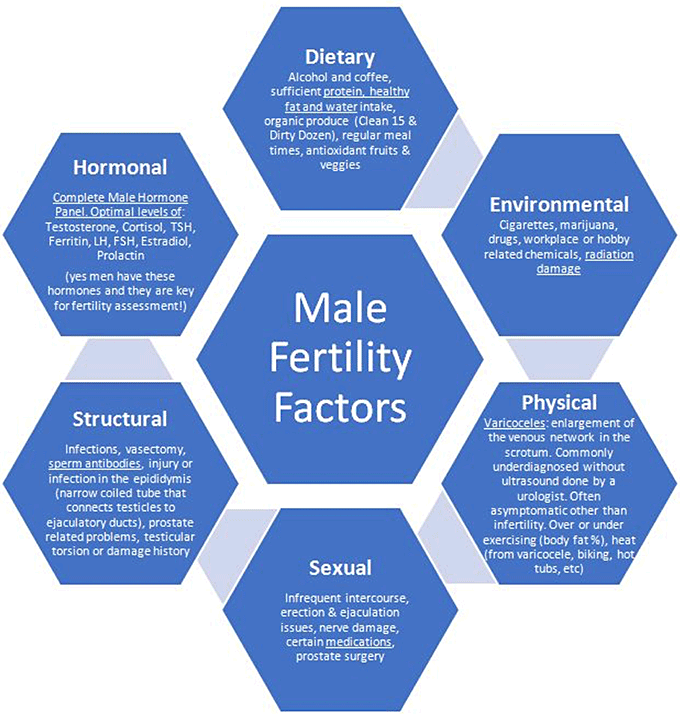When a couple is struggling with infertility, it is common for the woman to be put under the microscope while the man rarely has more than a sperm analysis done. The woman is often excessively treated before her partner has even been thoroughly assessed. Like most health concerns, it is important to get a complete picture and not just a single test performed. Male infertility is the same as any other health concern and deserves just as much consideration. If you and/or your partner wonder if this might be an issue, even if you’ve already been ‘screened’, please read on; there is so much more than a single standard semen analysis that needs to be done before checking male infertility off the list.
A significant number of couples fail to conceive or suffer recurrent miscarriages without realizing a frequent cause is actually the sperm.
A semen analysis looks at five things:
- Count – How many?
- Motility – Can they swim?
- Morphology – Do they have normal form? (heads, bodies and tails)
- Viscosity – Thick or thin?
- DNA fragmentation – Are your genes unravelled?
All of these factors are important on their own, but looking at the analysis as a whole, along with an overall assessment of the health of the individual, is the key to creating a successful plan for fertility.
A large French study of 26,600 men found that average sperm counts fell by a third between 1989 and 2005. This is one of the largest, most recent samples to date; however, older studies reflect similar findings. Sperm count is on the decline, as are many of the other markers. Morphology relates to the size and shape of the sperm in a semen sample. Normal sperm has an oval head and a single long tail. Currently normal is considered >4% meaning we only require a minimum of 4% normal sperm morphology before it’s considered an issue that needs to be addressed. Previously morphology was between 4-15% but now decreased to a mere 4%.
Morphology makes the sperm unable to penetrate the egg and affects motility and mobility. Most men have a significant amount of abnormally shaped sperm, but we can do better than 4%!
DNA fragmentation is another big factor, and it occurs in the head of the sperm. When fragmented DNA gets into the egg, it develops improperly, resulting in an inability to conceive or an early miscarriage.
My first piece of advice: make sure you get a second opinion on your semen analysis. There is a big difference between ‘okay’ and ‘optimal’, regardless of whether you plan to conceive naturally or assisted. When you are spending money on assisted fertility methods, give yourself the best possible chance for success. I find that couples who follow a 100 day preconception plan while waiting for fertility appointments often end up pregnant naturally while they wait.
What you eat, your lifestyle, your exercise routine, your stress, and your supplement regimen really matter when it comes to improving your semen analysis markers and overall health.

Check out the male fertility web (above) and get educated about all the components addressed with holistic fertility care. If you’re trying to conceive and want to understand more about improving your health and sperm, schedule a complementary 15 minute visit with me. You can book one of those here.
